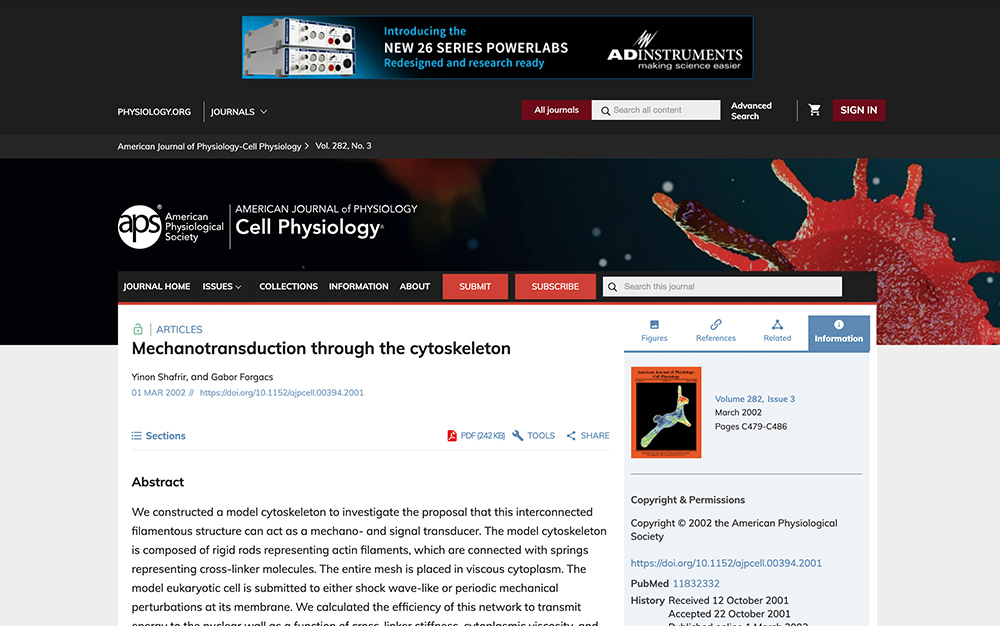Mechanotransduction through the cytoskeleton
Publication Summary:
We constructed a model cytoskeleton to investigate the proposal that this interconnected filamentous structure can act as a mechano- and signal transducer. The model cytoskeleton is composed of rigid rods representing actin filaments, which are connected with springs representing cross-linker molecules. The entire mesh is placed in viscous cytoplasm. The model eukaryotic cell is submitted to either shock wave-like or periodic mechanical perturbations at its membrane. We calculated the efficiency of this network to transmit energy to the nuclear wall as a function of cross-linker stiffness, cytoplasmic viscosity, and external stimulation frequency. We found that the cytoskeleton behaves as a tunable band filter: for given linker molecules, energy transmission peaks in a narrow range of stimulation frequencies. Most of the normal modes of the network are spread over the same frequency range. Outside this range, signals are practically unable to reach their destination. Changing the cellular ratios of linker molecules with different elastic characteristics can control the allowable frequency range and, with it, the efficiency of mechanotransduction.
View Publication
